Historical Roots of Tajika Astrology by Muhammad Imran
Tajika is a special branch of Indian astrology that deals with Horary and Annual Horoscopy in the technical manner of mid-eastern and western astrological traditions.
No doubt, Indian astrology has a long history of Horary (Prasna) as well as casting annual and monthly charts, probably way before any other tradition. Indians did espouse the Perso-Arabic style of Horary and Annual Horoscopy from 13th to 17th century CE; as shown by the historical and internal evidence of various Tājika Śāstra. Nonetheless, Indian Tajika system is not a ditto copy of Perso-Arabic tradition.
This article briefly scans the history and the etymological roots of terms and techniques, used in Tajika system of Indian Astrology.
Modern scholars refer Perso-Arabic astrology for the period of 7th to 13th century middle-east (what is today’s Iraq, Iran, Syria, and Egypt), which itself hinged upon Sassanian tradition and Greco-Egyptian legacy (now buzz as Hellenistic astrology). After the fall of Baghdad (1258 CE), the Pers0-Arabic astrological tradition regained its currency in Khorasan region (eastern Iran and western Central Asia), and later adopted by scholars in the realms of Mughals (1526 to 1857 CE) and Ottomans (1453 to 1922 CE).
Perso-Arabic astrology landed in India before Mughal period, probably during Delhi Sultanate (13th to 15th century CE). Interestingly, medieval Indians entitled Perso-Arabic astrology as “Tajika”. This is a unique word, as ancient Arabic and Persian cannons on astrology did not explicitly maintain the word ‘Tajika’.
Etymology of word ‘Tajik’
Tajik (Tājika تاجیک، تاجک or Tāzīk) is a word of Middle-Persian language, and derived from “Tazi” تازی or Tāzīg (with soft “t”). The word “Tazi” has couple of meanings. It was name of an Arab tribe Ṭayyiʾ who had settled in Central Asia in early middle ages. Later, the Turkic-Mongolian race of this area was known as “Tazi”. Therefore, Middle-Persian word “Tazi” also meant “Arab” or “Arabized”. However, Tajik people are neither ethnically Arabs, nor Arabic speakers. Many invaders and rulers of India, including Mughals also hailed from Central Asia. Finally, the “Tazi” is also a name of fighting dog breed, and war-horse breed, native to Central Asia (part of ancient Scythia).
Some modern writers presume that Vedic astrology first transmitted to a country what is today “Tajikistan”, then it came back to India. But this hypothesis is not endorsed by historians and linguists. The Tajik group of people has been spoken “Tajiki”, which is a dialect of Persian language. Before 20th century Tajikistan was not an independent country as such. Modern geographical boundaries are different from ancient world and middle ages. By the way, Uzbekistan (another country of same region) has more ancient places, historical figures and intellectual traces, than its neighbouring Tajikistan. A good number of Tajik ethnic group also live in Uzbekistan.
Encyclopaedia Iranica on Tajika
The most plausible and generally accepted origin of the word is Middle Persian tāzīk ‘Arab’ (cf. New Persian tāzi), or an Iranian (Sogdian or Parthian) cognate word. The Muslim armies that invaded Transoxiana early in the eighth century, conquering the Sogdian principalities and clashing with the Qarluq Turks (see Bregel, Atlas, Maps 8–10) consisted not only of Arabs but also of Persian converts from Fārs and the central Zagros region (Bartol’d [Barthold], “Tadžiki,” pp. 455-57). Hence the Turks of Central Asia adopted a variant of the Iranian word, täžik, to designate their Muslim adversaries in general. By the eleventh century (Yusof Ḵāṣṣ-ḥājeb, Qutadḡu bilig, lines 280, 282, 3265) the Qarakhanid Turks applied this term more specifically to the Persian Muslims in the Oxus basin and Khorasan, who were variously the Turks’ rivals, models, overlords (under the Samanid Dynasty), and subjects (from Ghaznavid times on). Persian writers of the Ghaznavid, Seljuq and Atābak periods (ca. 1000–1260) adopted the term and extended its use to cover Persians in the rest of Iran, now under Turkish rule, as early as the poet ʿOnṣori, ca. 1025 (Dabirsiāqi, pp. 3377, 3408). Iranians soon accepted it as an ethnonym, as is shown by a Persian court official’s referring to mā tāzikān “we Tajiks” (Bayhaqi, ed. Fayyāz, p. 594). The distinction between Turk and Tajik became stereotyped to express the symbiosis and rivalry of the (ideally) nomadic military executive and the urban civil bureaucracy (Niẓām al-Molk: tāzik, pp. 146, 178-79; Fragner, “Tādjīk. 2” in EI2 10, p. 63).”
Early Tajika Texts in Sanskrit
The oldest–known Tajika scripture was compiled by Samarasiṃha (also spelled as Samar Singh, in 1274 CE), when capital Delhi was under the control of Ghiyas-uddin Balban. Samarasiṃha’s primary text is known as Karmaprakāśa and also as Tājikatantrasāra. Although it is not available in complete form. But parts of this treatise is found in different commentaries and quotations by succeeding authorities. Interestingly, that was the same period when Indian Sufi poet and scholar Amīr Khusrau (1253–1325 CE) also recorded various socio-political and royal events in his astrological poetry. After few decades, Tejaḥsiṃha (also spelled Teja Singh) composed Daivajñālaṅkṛti in 1337 CE. This is the oldest Tajika text in Sanskrit, available to modern scholars, in its complete form.
Notable Tajika Texts in Sanskrit
Big gap between initial compilation of Tajika texts imply that arrival of Perso-Arabic astrology was not readily welcomed in India. Probably because the cultural and intellectual contacts between local Hindus scholars and foreign Muslims were either absent, limited, or strained during the period of Delhi Sultanate (1206–1526 CE).
However, during Mughal era (especially at the time of Emperor Akbar, who ruled from 1556 to 1605 CE), Muslim and Hindu scholars came closer to each other. That interaction resulted in cultural exchange along with proliferation of Perso-Arabic astrology among Indian scholars and select Brahmins.
One of the most celebrated names was 16th century’s Nīlakaṇṭha Daivajña of Benares (Varanasi), who was “Jyotiṣa Rāja” i.e. Royal Astrologer in the court of Emperor Akbar. Nīlakaṇṭha composed his famous Tājikanīlakaṇṭhī in 1587 CE. This is probably the most commented and translated book on the Tajika branch of astrology. Tājikanīlakaṇṭhī has been translated into modern Hindi and English by many Indian astrologers. Nīlakaṇṭha is also credited to the famous work “Praśna Tantra”.
In addition, Tuka, Yādavasūri, Ganesha, Suryadasa, and Balabadhra were noteworthy authorities on Tajika school of astrology during Mughal period. Balabadhara wrote two magnum opus: “Hāyana Ratna” on Tajika astrology, and “Horā Ratna” on Jataka (classical Indian nativity).
Borrowed Concepts in Tajika Astrology
Almost all Tajika scriptures embraced a good number of Perso-Arabic astrological concepts, especially related to Horary and Annual Horoscopy. In the course of transmission, they transliterated many Arabic words into Sanskrit. Following is the list of Sanskrit words and their actual Arabic equivalent with English meaning.
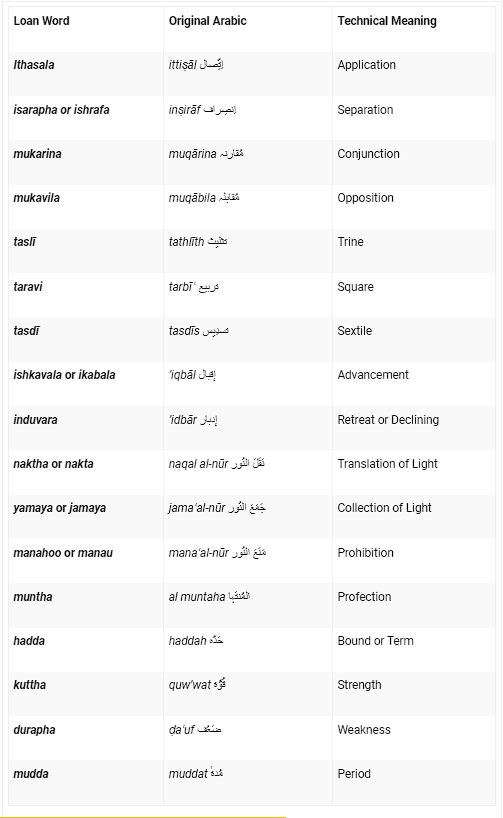
Apart from above, many other loan words appear in Tajika cannons that are not rooted in Sanskrit, but plain transliterations of Arabic words.
Inventions, Differences and Distortions
Although Tajika school is rooted in Perso-Arabic tradition, but it is not a mirror-image of Perso-Arabic astrology. In the course transmission, many changes naturally found ground, not only in the accent and spelling of borrowed words, but also in technical definitions and their applications. This is evident from the impartial comparison of both the schools: Perso-Arabic and Tajika. Interestingly, Tajika texts do not explicitly quote any notable Perso-Arabic astrologer, except one name. Some Tajika scriptures in Sanskrit do mention “Khindika”, i.e. Al-Kindi (801–873 CE). He was a highly respected polymath of his time, and mentor of famed Abu Ma’shar.
Seemingly Sanskrit scriptures on Tajika are not based on first-hand or primary source of Perso-Arabic astrologers. Rather, Tajika texts (penned by indigence Indians in Sanskrit) probably rest upon the oral tradition of those common Persian and Central Asian astrology-practitioners, who had migrated to India during Delhi Sultanate and Mughal Dynasty.
This is why we find a slightly altered concept of “Translation”, “Collection”, “Prohibition” in Sanskrit. Indian Tajika texts intentionally or unintentionally added many corollaries and conditions in the well-known 16 configurations. Similarly, the concept of “Receiving or Reception”, known as Kamboola Yoga in Tajika astrology, made too much complicated and sometime mingled with concept of “Pushing/Giving”. Needless to mention, Kamboola is from Arabic قبول “qabūl” that literally means “Reception”.
The concept of “Void of Course” appeared as Khallasara Yoga in Tajika texts, (Sanskrit ‘Khallasara’ is from Arabic خَلا السِیر Ḵhāla al-Sayir, literally means Void of Course). But the weakness of unaspected Moon (due to being at fag end of sign) left behind, while new conditions and corollaries overshadowed said concept in Tajika texts.
Another significant change was the introduction of new Sanskrit terms for Perso-Arabic concepts and techniques (instead of plain transliteration). For instance, the term “Panchavargya Bala” was probably coined in order to incorporate the concept of “Huzuz Khamsa” or “Maza’em” (“Five Essential Dignities”; i.e. Exaltation, Domicile, Triplicity, Term, and Face). Yet again, the last three elements of Five Essential Dignities of Tajika treatises differ from Perso-Arabic and Greco-Egyptian traditions. Dorothean Triplicity in Sanskrit scriptures on Tajika, was initially spelled as “Mussala” (مثلثہ). But later labelled Trirāśi, and Trairāśika.
The concept of “Punyu Saham” is a literal translation of Arabic word “Saham al Sa’adat” سہم السعادت (Part of Fortune). The Sanskrit “Saham” is a loan word from Arabic “Saham سَہم”, (literally means ‘Lot’ or ‘Part’). Although Sanskrit “Punya” is a good translation of Arabic “Sa’adat”. But, as indicator of material fortune, ‘Part of Fortune’ has nothing to do with moral virtue (punya).
The Sanskrit term “Harsha Bala” appeared for the concept of “Joy of Planet”, where Sanskrit Harsha is a nice translation of Arabic word “فرح Farah” (means ‘joy, happiness and comfort’). The ‘Joy’ is an old Greco-Egyptian parameter of planetary strength, when a planet occupies in certain preferable house (e.g. Sun in 9th house, Moon in 3th house, Jupiter in 11th house and so on).
As far as writing style is concerned, a distinct feature of Sanskrit Tajika texts, is maintaining “short examples with planets in sign or house”, next to astrological definitions and configurations. This is in line with the typical style of medieval Perso-Arabic texts and earlier Greco-Egyptian tradition.
Lastly, the distinctive difference of Indian Tajika system is the choice of zodiac. Tajika scholars, authors, and translators almost always followed Niryana (sidereal) zodiac, contrary to Tropical zodiac of Perso-Arabic world).
Why No Tajika Nativity?
No doubt, Perso-Arabic astrology (and its precedent Sassanian and Hellenistic legacy) had rich resources on Nativity (genethliacal astrology). But Indian astrologers on Tajika barely touched on this subject. Instead, they mainly focused on Horary and Annual Horoscopy.
This is not strange, because Indians have had richer resources on Nativity (aka Jataka). Apparently, there was no room for adopting anything new on Jataka from foreigners (Yavana). By the way, the Sanskrit term “Yavana” was also used to refer foreign Muslims in middle age Indian texts.
Despite literal, technical, internal and external variations, Tajika school of astrology is still alive in India. This is good omen.
Some Lesser-Known Facts
Today’s readers should be wary of the fact that Arabic language never been spoken by all the Muslims, around the world. Despite, Arabic language has been medium of written scholarly works for over a millennium, especially for writing Theology, Philosophy, and Applied Sciences. This is akin to the historical status of Latin language in the Medieval Christian world; and Sanskrit in India.
Although, most of the Perso-Arabic astrologers were native to Persian areas or had different dialects of Persian language. But they chose Arabic language as medium of their astrological writings. This is why, we hardly find any Perso-Arabic astrology text in the Persian language during 7th to 13th century.
The only notable exception was Al-Biruni (973 to 1048 CE). His widely translated and quoted text “The Book of Instruction in the Elements of the Art of Astrology” was initially written in Persian language. It was later translated into Arabic language. Actually Al-Biruni composed his famous “Elements” on the request of “Rehana” (a teenage daughter of Al-Biruni’s friend, who wanted a plain and practical summary of astronomy and astrology in her native Persian language).
It should be borne in mind that Al-Biruni was among the second wave Perso-Arabic astrologers, who hailed from Khorasan region, and spent decades of his life in India. Al-Biruni’s major astronomical-cum-astrology work is “Qānūn al-Masūdī” (Canon Masudicus). The “Canon Masudic” of Al-Biruni is available in Arabic and Latin, but not yet fully translated into modern English.
The Perso-Arabic astrology was not limited to Muslims only, nor it was anyway connected to Islam. In fact, notable writers and practitioners of early wave of Perso-Arabic astrologers include Zoroastrians, Jews, Christians.
For instance, “Al-Andarzaghar” and “Naubakht Ahvazi” (the first court astrologer of Abbasid dynasty) were Zoroastrians; then “Mashallah” and “Sahl” were Jews; another “Sahal” was Christian; whereas “Omar al Tabari”, “Al-Kindi”, Abu Ma’shar, Abu Ali, Abu Bakar, Al-Qabisi (Alcabitius) were Muslims. These names are the primary source of Perso-Arabic astrology.
Interestingly most of the Jews, Christians, Muslims of that time composed their books in Arabic language. Not because they were ethnically Arabs. But Arabic was the court language of Abbasid dynasty and standard mean of scholarly work at that time. The succeeding generations followed the earlier choice of Arabic language. This is why, astrology of that era is now called “Perso-Arabic”. A good number of Perso-Arabic astrological texts were created during “Abbasid Dynasty” (circa 750 to 1258 CE), headquartered in Baghdad, located at the outskirt of ancient ruins of Babylon.

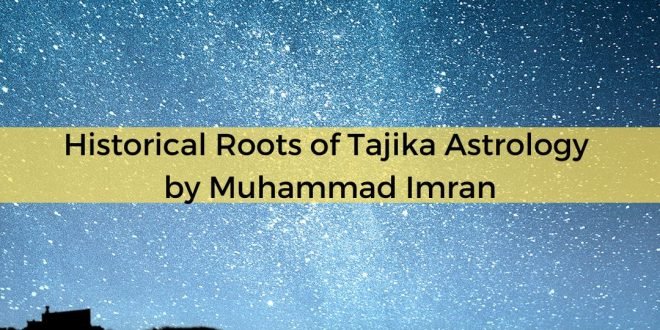


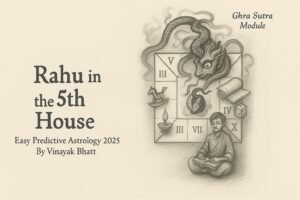

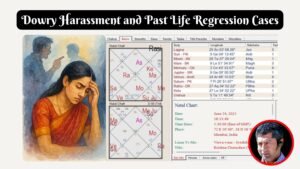
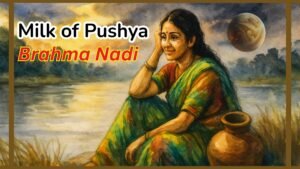


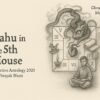


Leave a reply
You must be logged in to post a comment.